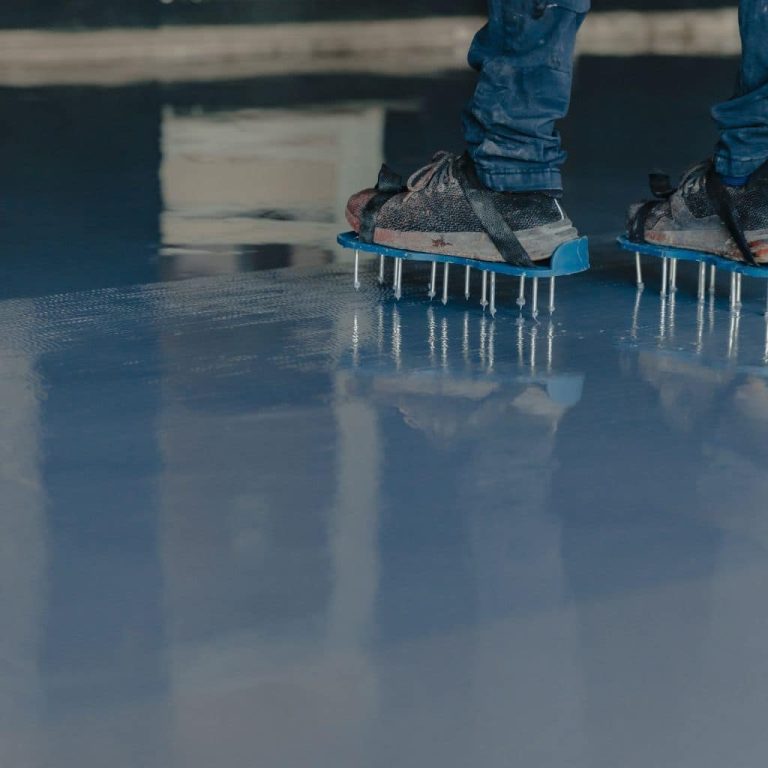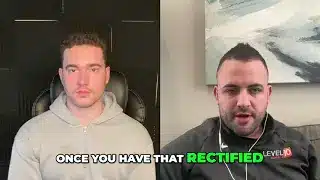Epoxy floors are lauded for their resilience, versatility, and aesthetic appeal, making them a preferred choice for various settings, from industrial warehouses to elegant showrooms. However, over time, a common challenge many encounter with epoxy flooring is yellowing—a phenomenon that can detract from the floor’s beauty and signify underlying issues. Enter Level 10 Coatings, your trusted ally in concrete coating services in the Chicagoland area, wielding the power of polyurea and polyaspartic coatings to combat this challenge, ensuring your floors retain their pristine condition and functionality.
Understanding Epoxy Floor Yellowing
Yellowing in epoxy floors is typically a result of prolonged exposure to ultraviolet (UV) light, which triggers a chemical reaction within the epoxy, altering its color. Besides UV exposure, factors like chemical spills and improper maintenance can also contribute to this discoloration. The yellowing not only impacts the floor’s aesthetics but could also be a precursor to more significant wear and tear.
What Causes Yellowing in Epoxy Floors?
Yellowing can be caused by several factors, ranging from the chemical composition of the epoxy resin to environmental exposures. Here’s what you need to know:
- Chemical Causes: Epoxy compounds can break down when exposed to UV light, leading to yellowing. This is particularly true for aromatic epoxies, which are less expensive but more prone to UV damage compared to their aliphatic counterparts.
- Environmental Causes: Beyond UV light, factors such as high temperatures and humidity can accelerate the yellowing process.
- Quality and Type of Epoxy: The inherent quality of the resin can also affect its propensity to yellow. Higher quality, UV-stabilized resins typically offer better resistance to discoloration.
Signs and Symptoms of Yellowing
Identifying early signs of yellowing involves noticing a gradual change in color, typically becoming more pronounced in areas exposed to sunlight or high-intensity artificial light. Over time, these changes can become permanent if not addressed promptly.
Preventative Measures
Preventing yellowing in epoxy floors starts from the selection process and extends through installation to ongoing maintenance.
- Choice of Epoxy: Opt for high-quality, UV-resistant epoxy. Aliphatic epoxies, though more costly, do not yellow as quickly as aromatic types.
- Installation Techniques: Ensure the floor is clean and free from contaminants before application. Follow mixing and curing instructions precisely to avoid improper curing, which can predispose the floor to discoloration.
- Maintenance Tips: Use only recommended cleaning products. Harsh chemicals can degrade the epoxy and contribute to yellowing. Regular maintenance checks can help catch and rectify potential issues early.
Advanced Protective Strategies
To further protect your epoxy floors from yellowing:
- Topcoats and Sealants: Apply a UV-resistant topcoat over the epoxy layer. These topcoats act as a barrier against UV light and extend the life of the underlying epoxy.
- UV-blocking Window Films: In sun-exposed areas, consider installing UV-blocking films on windows to reduce the amount of UV light reaching the floor.
- Professional Recoating: Regular professional assessments can determine when a recoating might be necessary, providing an additional layer of protection against yellowing.
The Superiority of Polyurea / Polyaspartic Coatings
Polyurea and polyaspartic coatings are the avant-garde in flooring solutions, offering a shield against the usual pitfalls that plague epoxy floors. These coatings are renowned for their UV resistance, which plays a pivotal role in preventing the yellowing process. Unlike traditional epoxy, these materials maintain their color integrity even when subjected to direct sunlight or harsh environmental conditions. Furthermore, their robust composition offers superior resistance to chemicals, abrasions, and impacts, ensuring longevity and durability.
The Environmental and Health Advantages of Polyurea / Polyaspartic Coatings
Sustainable Flooring Solutions
Polyurea and polyaspartic coatings are not just about enhancing the durability and aesthetics of your floors; they are also about making an environmentally responsible choice. These coatings are designed to have a lower environmental impact than traditional options. With low volatile organic compound (VOC) emissions, they contribute significantly less to air pollution and are safer for the environment. This attribute makes polyurea and polyaspartic coatings an excellent choice for projects aiming for green building certifications or anyone looking to reduce their ecological footprint.
Ensuring a Healthier Environment
Beyond their environmental benefits, polyurea and polyaspartic coatings promote healthier indoor spaces. Their low VOC content means fewer emissions indoors, contributing to better air quality and reducing the risk of health issues associated with chemical emissions. By choosing these coatings, property owners can ensure a safer, toxin-free environment for inhabitants, which is particularly important in residential settings or facilities like schools and hospitals.
The Economic Sense: Long-Term Savings with Polyurea / Polyaspartic Coatings
Cost-Effectiveness Over Time
While the initial investment in polyurea and polyaspartic coatings may be higher than traditional epoxy, the long-term savings are significant. These coatings are renowned for their longevity and resistance to wear, reducing the need for frequent touch-ups or replacements. Over time, the cost benefits become apparent, as the durability of these coatings means lower maintenance and repair costs, offering a smart financial decision for the long haul.
Maintenance Made Easy
The ease of maintenance is another financial plus. Floors treated with polyurea and polyaspartic coatings are easier to clean and require less intensive care to maintain their appearance and functionality. This translates to savings in both time and money, reducing the need for specialized cleaning products or professional maintenance services.
How Level 10 Coatings Can Help
Level 10 Coatings stands at the forefront of flooring innovation, specializing in the application of polyurea and polyaspartic coatings. Our expertise is not just in applying these coatings but in transforming your floors into durable, long-lasting, and aesthetically pleasing surfaces. Through our meticulous application process, we ensure that every square inch of your floor is protected against yellowing and other forms of degradation.
A Step-by-Step Guide to Preventing Floor Yellowing
Step 1: Assessing Your Current Floor Condition
Our team begins with a thorough assessment of your existing floor, identifying any areas of concern and determining the best course of action to enhance and protect your flooring.
Step 2: Choosing the Right Coating Solution
Based on the assessment, we recommend the ideal polyurea or polyaspartic coating solution tailored to your floor’s specific needs, ensuring optimal protection and aesthetics.
Step 3: Professional Application by Level 10 Coatings
Our skilled professionals meticulously prepare and apply the chosen coating, utilizing state-of-the-art techniques to ensure a flawless finish that stands the test of time.
Step 4: Post-Application Care and Maintenance
We provide comprehensive guidance on maintaining your newly coated floor, ensuring it remains in pristine condition for years to come.
Why Choose Level 10 Coatings
Choosing Level 10 Coatings means partnering with a leader in floor coating solutions, dedicated to delivering unparalleled quality and service. Our commitment to using cutting-edge technology and materials ensures your flooring investment is protected and optimized for longevity. The accolades from our satisfied customers stand as a testament to our dedication to excellence and customer satisfaction.
The battle against epoxy floor yellowing is one that can be decisively won with the right expertise and solutions. Level 10 Coatings, armed with superior polyurea and polyaspartic coatings, stands ready to transform your flooring from being merely functional to being exceptionally durable and visually stunning. Say goodbye to yellowing and embrace a future where your floors continue to shine and perform at their best.
For those seeking to preserve the beauty and integrity of their flooring, the message is clear: Level 10 Coatings is your partner in achieving and maintaining flooring excellence. Contact us today to learn more about our solutions and how we can help protect your investment for the long haul.
Frequently Asked Questions
Q: How long do polyurea / polyaspartic coatings last compared to traditional epoxy?
A: Polyurea and polyaspartic coatings are known for their long-lasting durability, typically outperforming traditional epoxy in terms of lifespan and resistance to wear and tear.
Q: Can polyurea / polyaspartic coatings be applied to any type of floor?
A: These coatings are highly versatile and can be applied to a variety of flooring types, though the specific preparation and application processes may vary depending on the floor’s material and condition.
Q: Are there color and design options available with polyurea / polyaspartic coatings?
A: Absolutely! One of the benefits of these coatings is the range of colors and design options available, allowing for customization to fit your aesthetic preferences.


